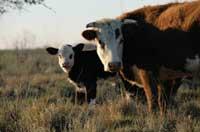Europe opens the door to GMOs
2003/07/03 Galarraga Aiestaran, Ana - Elhuyar Zientzia

In fact, USA had been trying to get it. Although in the European market there are no prohibitions for the sale of foods modified by genetic engineering, to date a moratorium based on the precautionary principle has been applied to these products. As a result, the marketing of genetically modified products has not been authorized in recent years.
In recent times Spain, Great Britain, Ireland, Finland and the Netherlands have favored the elimination of the moratorium, but France, Belgium, Denmark and Luxembourg wanted it to remain the same. However, the document now approved seems to satisfy the wishes of all but the US. And they consider these rules too strict.
While it is true that the legislation on genetically modified food and feed is the most demanding in the world, both in terms of labelling and traceability, the Parliament considers that the objective is the right of choice of consumers. For this purpose, the labelling of products marketed for human and animal feed should include the use of genetically modified ingredients. If a genetically modified substance appears accidentally in a food, its content is 0.9%. From there, they should be labeled.
Transgenic to pil pil pil

The 0.9% limit sparked debate. It seems that some parliamentarians wanted to put this limit at 0.5%. They finally accepted 0.9%, but also said it can be lowered over time.
In addition, some felt that it was much easier for foods and feeds that do not contain genetically modified products to be labeled “without genetic transformation.” Easier, cheaper and lighter. Most chose the other.
Another questionable aspect is that the regulations only affect the product that reaches the final consumer. For example, nothing will appear on the meat label of genetically engineered cattle, or on non-food products such as clothing made from genetically modified cotton.
However, no safety measures for health and the environment are mentioned in the approved regulations. As before, in order for genetically modified products to be accepted for marketing, they must be analyzed individually and demonstrate that they do not cause any harm to health and the environment.
There are already around twenty GM products on the European market before the moratorium begins. Now they will have to adapt to the new regulations and there are another twenty products pending authorization.
According to the regulations so far, to appear on the label, the genetically modified ingredient should contain at least 1% of the food. In addition, products such as oil extracted from transgenic sunflower or cookies made with this oil escaped the law. Also, the feed did not have to explain that it was transgenic.

On the other hand, one of the aspects that most worries ecologists is the risk of contamination, the exchange of genetic information between genetically modified crops and the rest. In this sense, the Parliament has entrusted each State with the responsibility and regulations to prevent it.
In the end, perhaps not entirely, but in the European market at least windows have been opened to genetically modified foods.

Gai honi buruzko eduki gehiago
Elhuyarrek garatutako teknologia






